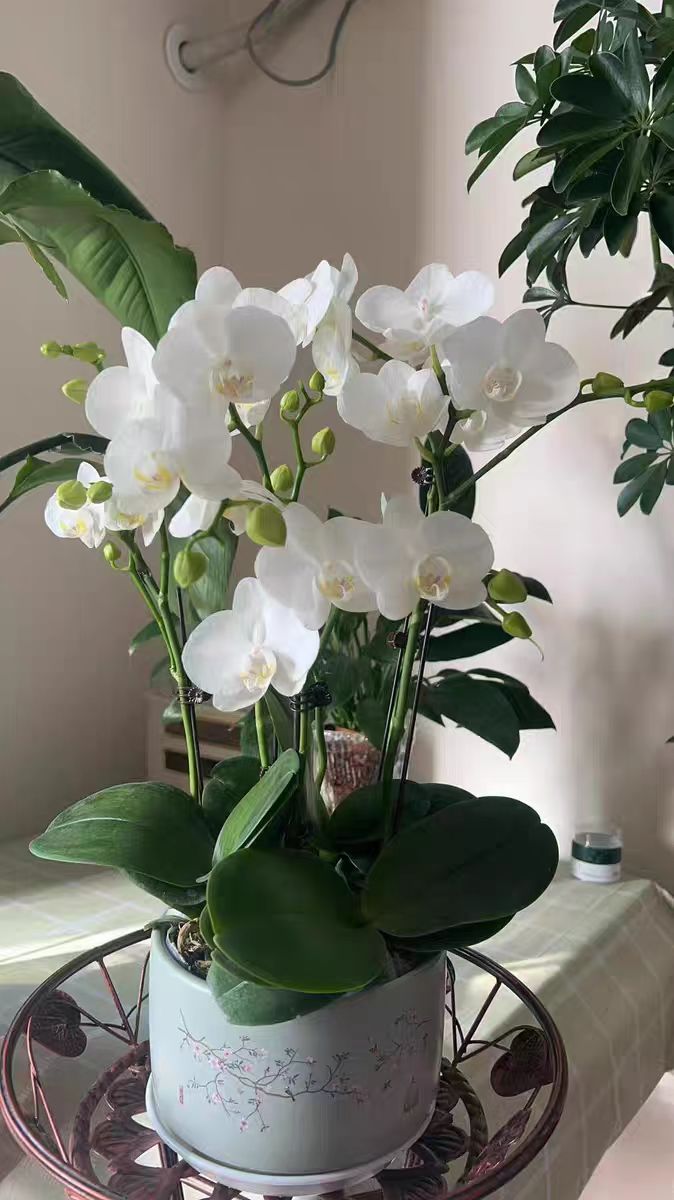What should I do if my phalaenopsis has poor nutrient absorption?
Many flower enthusiasts encounter the problem of poor nutrient absorption in phalaenopsis during cultivation, with symptoms such as yellowing leaves, slow growth, and small flowers. To solve this issue, it is essential to first understand the underlying causes and then prescribe targeted solutions.
Improper choice of planting medium is a common cause of poor nutrient absorption in phalaenopsis. As an epiphytic orchid, phalaenopsis requires roots to have good air permeability and drainage. Planting in ordinary garden soil, which is highly viscous and poorly aerated, can hinder root respiration and prevent normal nutrient uptake. Even when using media like sphagnum moss or bark, prolonged use without replacement can lead to decay and compaction of the medium, damaging the root growth environment and affecting nutrient absorption.
Unreasonable watering and fertilization can also impact nutrient uptake in phalaenopsis. Excessive watering can make the planting medium overly moist, causing root hypoxia and rot, which in turn affects nutrient absorption. Insufficient watering, on the other hand, keeps the plant in a prolonged water-deficient state, restricting physiological activities and nutrient transport. In terms of fertilization, excessively high concentrations can cause fertilizer burn and damage roots. Improper fertilization frequency—such as long-term lack of fertilization leading to nutrient deficiency or frequent fertilization causing salt accumulation in the medium—can disrupt the plant's normal nutrient absorption.
Inappropriate light and temperature conditions can also negatively affect nutrient absorption in phalaenopsis. Excessive light can easily scorch the plant, impair photosynthesis, and hinder nutrient synthesis. Insufficient light prevents the plant from fully carrying out photosynthesis, making it difficult to accumulate adequate nutrients. The optimal growth temperature for phalaenopsis is 15–28°C; both excessively high and low temperatures can slow down plant growth, disrupt metabolism, and reduce nutrient absorption capacity.
Pest and disease infestations are factors that cannot be ignored. Diseases such as root rot and soft rot directly damage root tissues and block nutrient absorption. Pests like spider mites and scale insects suck plant sap, leading not only to nutrient loss but also spreading pathogens and further aggravating plant damage.
To address the above causes, a series of effective measures can be taken to improve nutrient absorption in phalaenopsis:
Select appropriate planting media and replace them regularly: High-quality mixed media such as sphagnum moss, bark, and coconut coir provide a favorable growth environment for roots. It is generally recommended to replace the medium every 1–2 years.
Water and fertilize rationally: Follow the principle of "watering when the medium is dry but not overly dry" to avoid waterlogging. Adopt the method of "applying thin fertilizers frequently": during the growing season, apply a dilute liquid fertilizer every 1–2 weeks, and increase phosphorus and potassium fertilizers during the flowering period to promote flower bud differentiation and blooming.
In terms of environmental regulation, provide suitable light and temperature for phalaenopsis: place it in a location with scattered light, shade it in summer, and take warm-keeping measures in winter. Additionally, strengthen pest and disease prevention: regularly inspect the plant, and promptly implement corresponding measures upon discovering pests or diseases, such as using biological or chemical pesticides to prevent the spread of infestations.
Poor nutrient absorption in phalaenopsis is the result of multiple factors. Only by deeply understanding the underlying causes and comprehensively improving planting media, water and fertilizer management, environmental conditions, and pest control can phalaenopsis regain health and vitality. Of course, as each plant's growth status and environmental conditions vary, flexible adjustments are needed according to specific circumstances during actual cultivation.
What should I do if my phalaenopsis has poor nutrient absorption?

Share with
Tagged in :




Leave a Reply